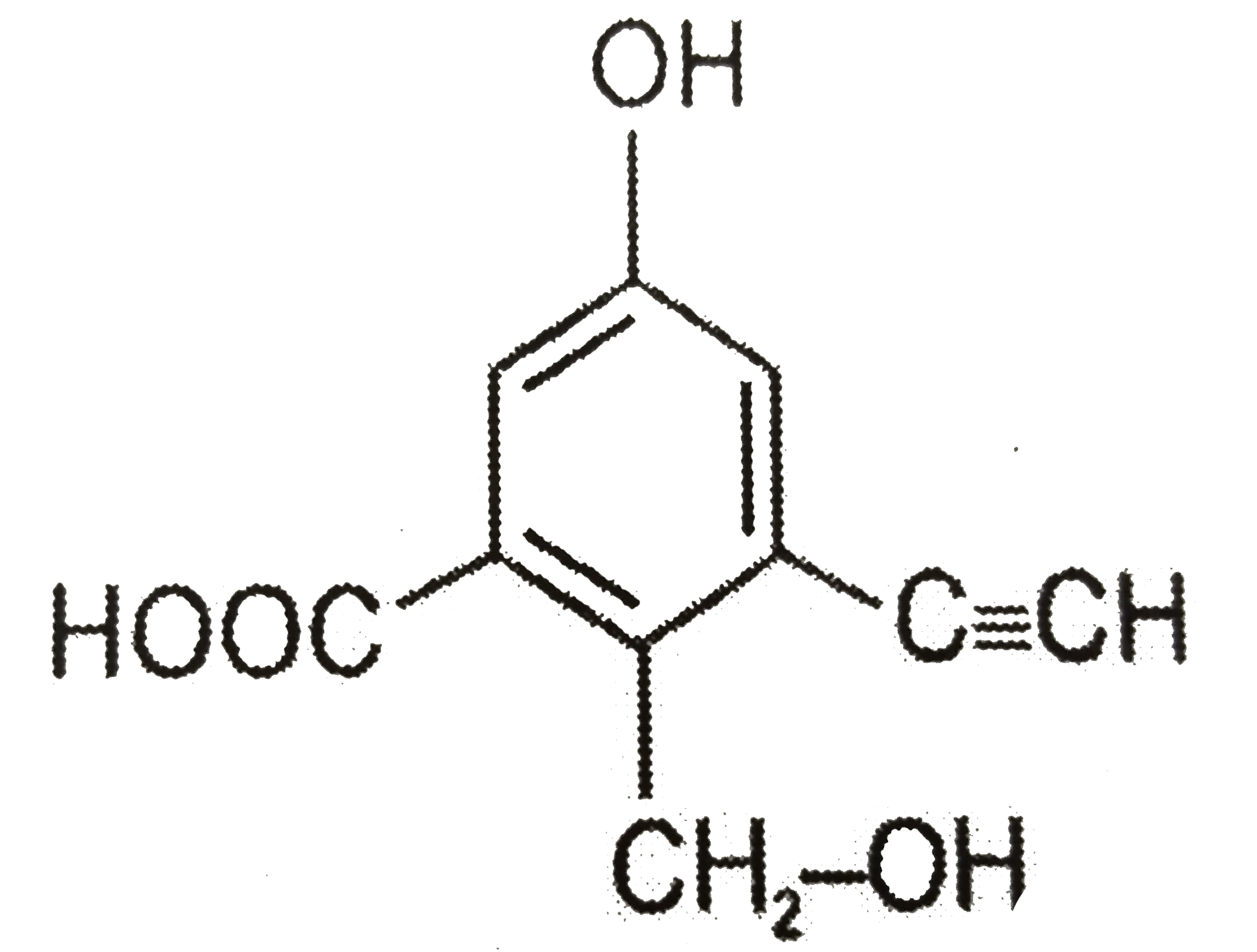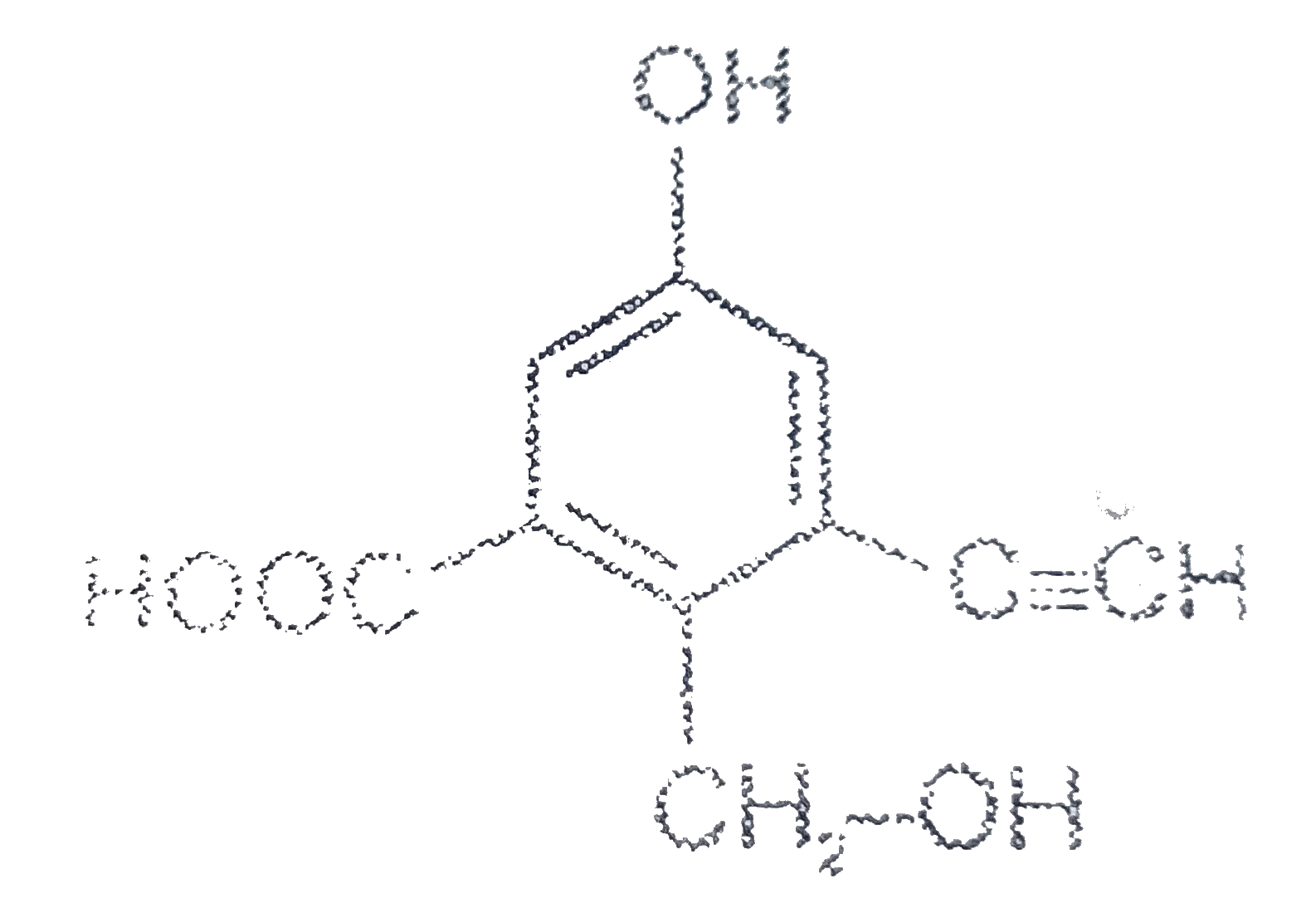Total number of moles of P−H bond(s) in product(s) when one mole of white P4 completely reacts with KOH solution:
The correct Answer is:9
To determine the total number of moles of P-H bonds produced when one mole of white phosphorus (P₄) reacts completely with KOH solution, we can follow these steps:
Step 1: Write the Reaction Equation
When white phosphorus (P₄) reacts with KOH, it produces phosphine (PH₃) and potassium hypophosphite (KH₂PO₂). The balanced reaction is:
P4+4KOH+2H2O→2PH3+2KH2PO2
Step 2: Identify the Products
From the balanced equation, we can see that the products formed are:
- 2 moles of PH₃
- 2 moles of KH₂PO₂
Step 3: Count the P-H Bonds in Each Product
1. For PH₃:
- Each molecule of PH₃ contains 3 P-H bonds.
- Therefore, for 2 moles of PH₃:
2 moles of PH3×3 P-H bonds/mole=6 P-H bonds
2. For KH₂PO₂:
- Each molecule of KH₂PO₂ contains 2 P-H bonds.
- Therefore, for 2 moles of KH₂PO₂:
2 moles of KH2PO2×2 P-H bonds/mole=4 P-H bonds
Step 4: Calculate the Total Number of P-H Bonds
Now, we can add the number of P-H bonds from both products:
6 P-H bonds (from PH3)+4 P-H bonds (from KH2PO2)=10 P-H bonds
Step 5: Determine the Total Moles of P-H Bonds
Since we are asked for the total number of moles of P-H bonds, we can express the total number of P-H bonds as moles:
Total moles of P-H bonds=10 moles
Thus, the total number of moles of P-H bonds produced when one mole of white phosphorus reacts completely with KOH solution is 10 moles.
---
When white phosphorus (P₄) reacts with KOH, it produces phosphine (PH₃) and potassium hypophosphite (KH₂PO₂). The balanced reaction is:
From the balanced equation, we can see that the products formed are:
- 2 moles of PH₃
- 2 moles of KH₂PO₂
1. For PH₃:
- Each molecule of PH₃ contains 3 P-H bonds.
- Therefore, for 2 moles of PH₃:
2 moles of PH3×3 P-H bonds/mole=6 P-H bonds
- Each molecule of KH₂PO₂ contains 2 P-H bonds.
- Therefore, for 2 moles of KH₂PO₂:
2 moles of KH2PO2×2 P-H bonds/mole=4 P-H bonds
Now, we can add the number of P-H bonds from both products:
6 P-H bonds (from PH3)+4 P-H bonds (from KH2PO2)=10 P-H bonds
Since we are asked for the total number of moles of P-H bonds, we can express the total number of P-H bonds as moles:
Total moles of P-H bonds=10 moles
Topper's Solved these Questions
- 15TH GROUP ELEMENTSBOOK - NARAYNACHAPTER - 15TH GROUP ELEMENTSEXERCISE - Level-VI
125 Videos
- 15TH GROUP ELEMENTSBOOK - NARAYNACHAPTER - 15TH GROUP ELEMENTSEXERCISE - Complete the following reactions
25 Videos
- 15TH GROUP ELEMENTSBOOK - NARAYNACHAPTER - 15TH GROUP ELEMENTSEXERCISE - Level-II (H.W)
41 Videos
- ELECTRO CHEMISTRYBOOK - NARAYNACHAPTER - ELECTRO CHEMISTRYEXERCISE - SUBJECTIVE QUESTIONS
48 Videos
- 16 TH GROUP ELEMENTS BOOK - NARAYNACHAPTER - 16 TH GROUP ELEMENTS EXERCISE - EXERCISE - 4 NCERT EXAMPLERS/H.O.T.S.
18 Videos
Similar Questions
Knowledge Check
One mole of P4 molecules contains -
A1 moleculeB4 moleculesC1/4×6.022×1023 atomsD24.092×1023 atomsThe number of moles of KMnO4 that will be needed to react with one mole of sulphite ion in acidic solution is
A2/5B3/5C4/5D1The number of moles of KNnO4 that will be needed to react with one mole of sulphite ion in acidic solution is :
A4/5B2/5C1D3/5
NH3+NaOClgolatin or EDTA+−−−−−−−−−−−→ products
The number of moles of N−H bonds present in one mole of the strongest nucleophile present in the product is:
View SolutionNo. of moles of H2 gas evolved when one mole of the following compound reacts with sodium.

View SolutionThe number of P - H bond(s) in phosphinic acid is:
View SolutionTotal number of moles of HCl reacts with one mole of borax to converts all borons to boric acid?
View SolutionThe number of moles of KMnO4 that will be needed to react with one mole of sulphite ion in acidic solution is
View Solution

